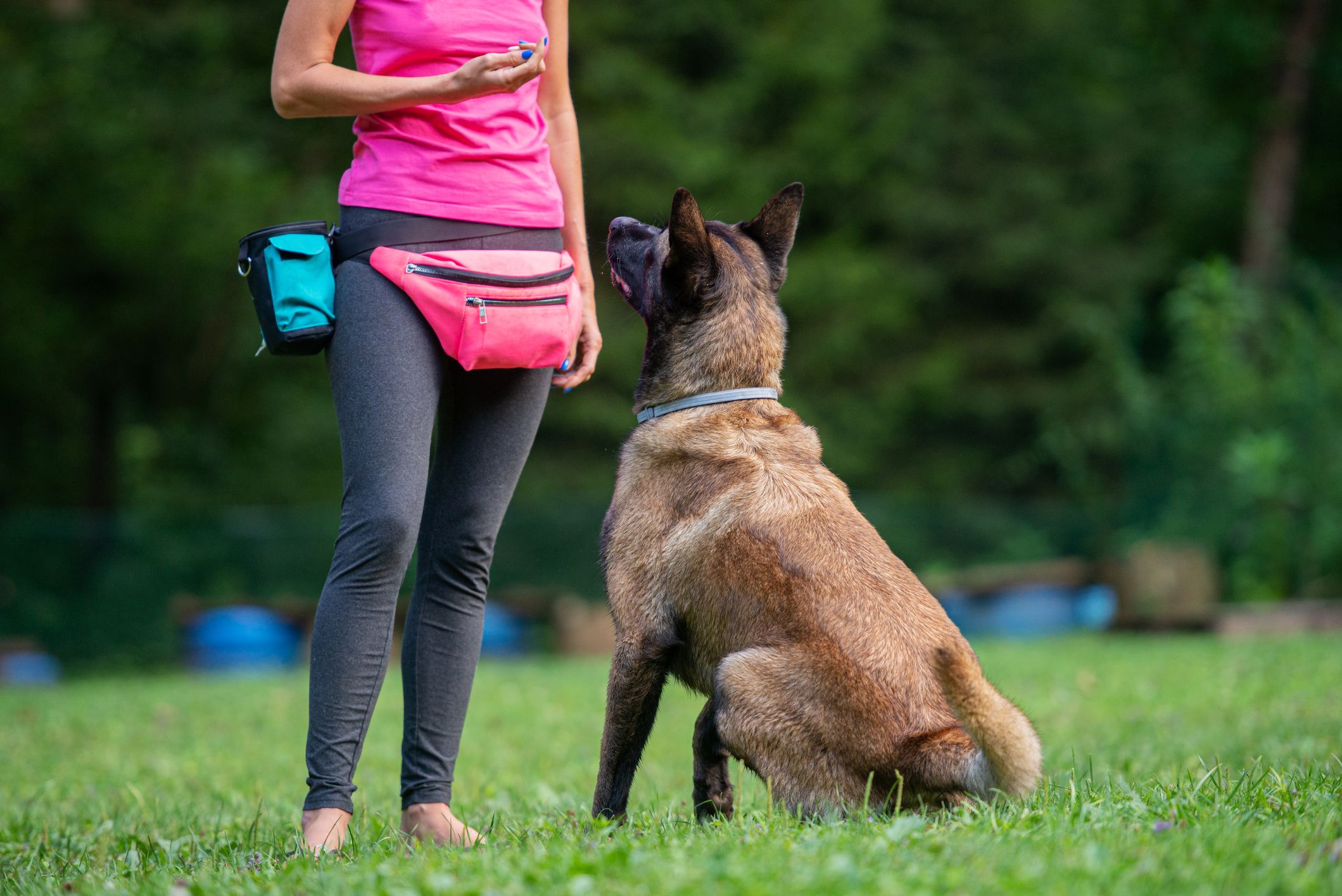Master Important Commands: Effective Canine Training Made Easy
Reliable pet training is a basic aspect of accountable pet dog ownership, and mastering vital commands serves as the foundation for a harmonious relationship in between handler and dog. Understanding the nuances of canine habits and the training process is key; nevertheless, the trip to a trained pet often provides unexpected difficulties that call for focus.
Understanding Your Canine's Actions
To grasp the nuances of efficient canine training, it is important to break down and assess your pet dog's actions. Dog training. Recognizing the inspirations behind your pet's activities is important; behaviors can originate from instinct, worry, excitement, or a wish for focus. By observing your pet dog in numerous circumstances, you can identify patterns that may indicate underlying emotions or demands
For instance, a pet dog that barks excessively might be sharing dullness, stress and anxiety, or a demand for social communication. On the other hand, a dog that exhibits destructive actions may be looking for stimulation or remedy for stress. Acknowledging these triggers enables you to tailor your training method efficiently.
In addition, it is important to consider the canine's type qualities, as they can affect actions considerably. Some types are predisposed to details characteristics, such as herding or safeguarding instincts, which can affect their responses to particular stimuli.
Last but not least, uniformity in your feedbacks to your pet's behavior fosters a much better understanding between you and your family pet. This shared understanding is foundational for constructing count on and facilitating an efficient training procedure that supports both behavior modification and positive support.
Essential Commands to Teach
Educating essential commands is a fundamental facet of effective pet dog training, offering the structure for a well-behaved and responsive pet dog. These commands not only improve interaction between the proprietor and the canine yet additionally make certain security in different environments.
The most crucial commands consist of "Sit," which encourages your dog to continue to be stationary and calm; "Stay," which strengthens the idea of continuing to be in one area up until released; and "Come," which is crucial for recalling your pet dog from possibly hazardous scenarios. "Down" educates dogs to lie down, promoting relaxation and control, while "Leave it" assists stop pets from grabbing dangerous or unwanted products.
" Heel" is one more crucial command that encourages your canine to stroll very closely next to you, improving chain good manners. Finally, "No" This Site acts as an essential boundary-setting command, assisting to deal with unfavorable habits.
Training Methods for Success
Efficient canine training relies greatly on utilizing a variety of methods that satisfy both the dog's discovering design and discover here the owner's training goals. One key strategy is favorable reinforcement, which includes rewarding preferred habits with deals with, appreciation, or play. This approach motivates the canine to repeat those behaviors, cultivating a solid bond between owner and pet dog.

One more effective method is clicker training, where an unique noise, made by a remote control, marks the exact minute a dog performs a preferred activity. This precise timing helps dogs connect the actions with the benefit, enhancing their understanding.
Consistency is critical in all training approaches. Establishing clear commands and keeping the very same hints aids the pet understanding assumptions extra swiftly. In addition, short, engaging training sessions stop monotony and rise retention.
Incorporating socializing possibilities is additionally essential. Exposing pet dogs to various settings, individuals, and other pets aids them create confidence and versatility.
Finally, perseverance plays a substantial role in effective training - Dog training. Each dog finds out at their own pace, and comprehending this can lead to a much more satisfying training experience for both the proprietor and the pet. Executing these techniques will certainly establish the foundation for efficient pet training
Common Challenges and Solutions
Despite the best training methods, canine owners commonly encounter common challenges that can impede progress. When family participants utilize different commands for the same actions, it perplexes the pet, leading to inconsistent actions.

In addition, some canines might show stubbornness or lack motivation. This can commonly be dealt with by incorporating positive reinforcement methods, such as deals with or praise, to urge preferred actions. Tailoring rewards to what your canine finds most inspiring can dramatically enhance their engagement.
Lastly, worry or anxiousness can restrain progress in training. Acknowledging indications of anxiety and changing the training pace as necessary is important. Employing steady exposure to feared stimuli can assist build confidence gradually, facilitating a more effective training experience.
Keeping Uniformity and Persistence
Uniformity and perseverance are extremely important in canine training, as they develop the structure for attaining long-term behavior modifications. Dogs thrive on regular and clear assumptions; hence, preserving a consistent method in commands, benefits, and modifications is essential. When fitness instructors make use of the very same cues and signals dependably, canines are much better able to understand what is being asked of them. Variance can lead to complication and aggravation, undermining the training process.
Similarly crucial is the function of persistence. Training a pet is not an immediate procedure; it needs time and repetition. Dogs, similar to humans, have varying learning rates and may not understand commands quickly. Instructors have to identify this and stay tranquil, offering inspiration instead than stress. Positive reinforcement plays an important duty below, fulfilling desired behaviors and helping to promote a trusting connection in between the dog and instructor.
Final Thought
Mastering essential commands is essential to effective pet training, cultivating boosted communication and strengthening favorable habits (Dog training). Ultimately, a trained pet not just displays good habits however also develops self-confidence, contributing to a harmonious relationship between the pet dog and its proprietor.